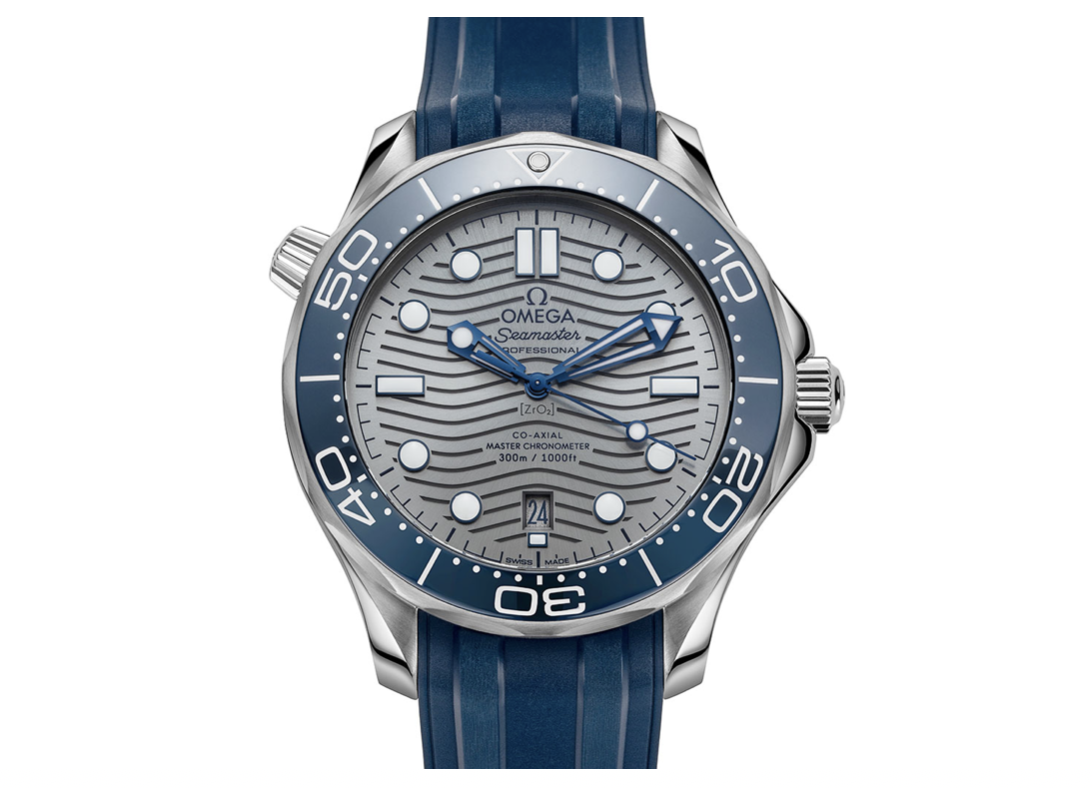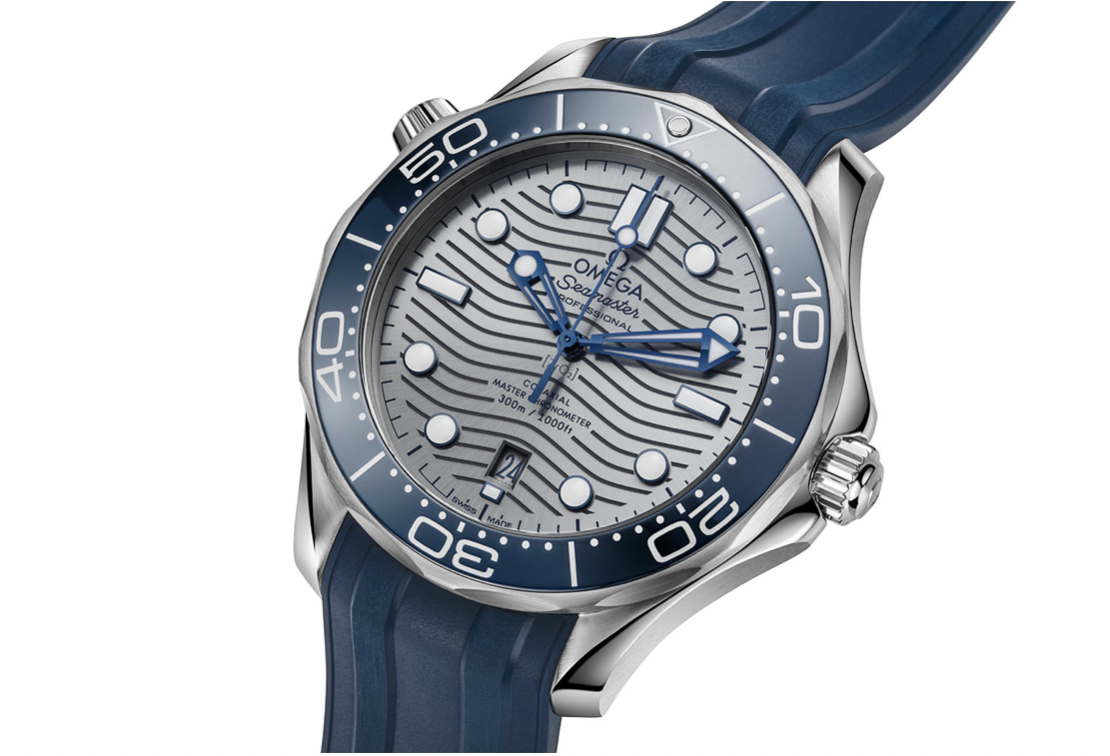To look at two Formula One cars, aside from the distinctive paint jobs, it would be hard to tell one from the other. Yet these are machines built independently, in secret, by isolated teams working to different principles and ideas. The reality is that each car is incredibly different on a micro level, despite seeming so indistinct at the macro. The same could be said of Rolex’s Submariner and Omega’s Seamaster—two watches that seem so similar on the surface, yet differ in approach so dramatically when seen just a little closer.
Watchfinder, one of the world’s largest resources for pre-owned watches has a lot to say on the Omega vs Rolex debate, you can see some of their YouTube videos here. They leave the viewers in no doubt who and what they think provides the best value, with Omega coming out on top pretty much every time:
Several of the online community referred to the new Omega Seamaster as the “Rolex Killer”, but lets look at the facts and then you can decide where you would want to invest in your next quality watch if either of these are on your radar.
A way to look at the similarities between these two watches would be to speculate on the brief given to the designers: a large, steel case, surrounding a black dial; clear numerals, clear hands, all smothered in luminous paint; a large turning bezel with minute markers on it and—of course—enough water resistance to get the job done.
And both those watches have that, almost identically. From the shared 300m water resistance to the triangle-topped bezel, these are two watches that, to the casual observer, do the same thing in the same way. But it’s in the details that the clues lie, that tell us more about the two brands that made these watches and the motivation behind them.
The first detail is perhaps the most glaring, and that’s when these watches were first debuted. For Rolex, its Submariner was rushed to market in 1954 after an announcement in 1953, quickly following the military-spec Blancpain Fifty Fathoms that set the whole dive watch market in motion.
The Omega, on the other hand, was a no-show until 1957, when the brand released a trifecta of watches that would change the company forever: the Seamaster 300, the Railmaster, and last but certainly not least, the Speedmaster. The Seamaster already existed as a kind of gentleman’s timepiece with a bit of damp and dust resistance, but it was a full four years before Omega fully committed to making it a dive watch.
Why is that? Look at it like this: Rolex, still less than 50 years old by the time the Submariner was announced was a bit of a young upstart, trying to compete against brands with centuries to their names. With the pace of technological growth now, it’s hard to imagine a scenario where youthful exuberance is so overlooked—the second most valuable brand in world today, Google, has only just left its teens—but we’re talking about a time and, more to the point, an industry where heritage carries as much weight, if not more, than innovation—as evidenced by the chaotic reaction to the quartz crisis later in the century.

Omega, while not the oldest brand, still pegs Rolex by over half a century, and had earned a reputation in its dominance of the observatory trials—accuracy competitions held at observatories across western Europe—with its incredibly precise movements. It didn’t just make watches—it made timepieces, delicate machines crafted for the sole purpose of telling the time to a fraction of a second. Diving was a brutish, manual slog by comparison, the wrong arena for an elegant, accurate Omega—that is, until a certain Mr. Jacques Cousteau came along.
A year after the Rolex Submariner came into existence, an underwater film was shot across the Persian Gulf, the Red Sea and the Indian Ocean by a small crew aboard the ship Calypso. Their captain, Jacques Cousteau, was no stranger to scuba diving, despite its infancy as a profession; after all, it was he and naval engineer Émile Gagnan who developed the first open-circuit, self-contained underwater breathing apparatus in the first place.
The film, Le Monde Du Silence, The Silent World, not only won an Academy Award for Best Documentary Feature when it released in 1956, it also inspired a generation to explore, whetting the public’s appetite for the Mercury, Gemini and ultimately Apollo space programs to follow. It showed a world never seen before, a romantic, colourful, impressive and dangerous environment—and it also showed the Rolex Submariner prototype strapped to Cousteau’s wrist.
The dive watch was admired not just as a workman’s tool—it had become the very lifeline that stood between a few brave men and the beautiful but deadly oceans they explored. It was about precision after all, and Omega finally realised it needed to get on board with it. By 1957, the Seamaster had been completely revised, no longer a half-hearted attempt to resist moisture—now a fully fledged diving weapon.
A closer look at it in comparison to the Submariner, however, demonstrates the difference in approach between the two brands. This second-generation 300 is embellished with fine details like the twisted lyre lugs that blend into the asymmetric crown guards, distinguished sword-shaped hands—which superseded the even more ornate Broadarrow hands—a Bakelite bezel with luminous markers for this variant and the elegant ‘Seamaster 300’ script on the dial.

Omega, in its pursuit to reflect the precision of its brand in its dive watch, even went to the trouble of inventing a pressure activated, water resistant crown that didn’t require screwing down. Unfortunately, while the design worked well in deeper waters, the lack of pressure in the shallows let water seep in—so Omega quietly replaced them at service.
By comparison, the Submariner is incredibly simple. Its Twinlock screw-down crown was based on the same technology as the 1920s Oyster, which itself was borrowed from a pocket watch from the 1800s. The case is formed and finished simply, the bezel printed on aluminium with a glowing pip applied, the dial doing just what it has to without frills. The watch actually features many parts that were shared across the Rolex catalogue, which is how it was adapted from the Turn-O-Graph so quickly, and how the GMT-Master followed so soon after. Overall, it’s a prime example of form following function, usability, affordability and reliability all taking priority over how it looks.

Perhaps the speculation on the brief wasn’t quite right; we’ve clearly got two different brands coming from two different backgrounds competing for the same gig, and the results look almost identical at a glance. But Rolex had nothing to lose, so it produced a watch that did the job, did it well, and nothing more; Omega, on the other hand, had to uphold its reputation for beauty, innovation and precision for what is, ultimately, just a tool to do a job.
